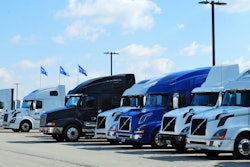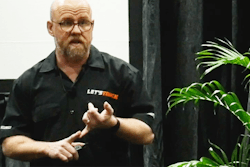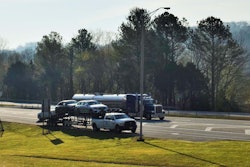 Early publicity for autonomous truck development highlighted the potential for drivers to disengage from driving while the truck drove itself.
Early publicity for autonomous truck development highlighted the potential for drivers to disengage from driving while the truck drove itself.It seems most autonomous car wrecks point to the “mushy middle of automation,” as autonomy expert Bryant Walker Smith called it in the Wall Street Journal. “It’s dangerous when people feel safer than they actually are,” says Smith, an assistant professor of law at the University of South Carolina.
Indeed. In two fatal accidents this year, safety drivers were behind the wheel of cars with some level of autonomous capability. In 2016, an inattentive Tesla driver died when his car drove under a white dry van because the car’s detection system didn’t notice it against the bright sky. Tesla defended itself, saying its Autopilot mode instructions required the driver’s full attention.
That illustrates the real problem, which is the double message inherent in these incidents: You can let this car drive itself, but you can’t really let this car drive itself. One solution at this stage would be to scale back how easy it is for ordinary four-wheelers to drive in a semi-autonomous vehicle where they’re supposed to be 100 percent alert.
For research and development, drivers passing strict screening and preparation should be able to handle test runs that require total vigilance. There are no doubt many driving circumstances, like the white trailer incident, that need to be identified and resolved before we launch even more vehicles onto public highways piloted by machines and presumptuous drivers. Tesla alone already has thousands of Autopilot-equipped cars on the road.

It’s been suggested that autonomous-driving development should skip the “mushy middle.” Technically, that’s Level III operation, where a safety driver is required but the monitoring isn’t as demanding as in Level II, where most testing has taken place. Then it would progress to Level IV, where the technology is so advanced that the vehicle is fully autonomous with minor possible exceptions, and Level V, where the vehicle is truly and safely self-driving.
Skipping Level III was the prediction of three panelists at the recent Technology & Maintenance Council annual meeting, as reported by my colleague Jeff Crissey, editor of Commercial Carrier Journal. Experts say that as marvelous as new crash-avoidance technology is, it still can’t analyze far enough ahead to alert the driver of some rapidly developing problems.
The Journal notes a 2015 study that found some drivers in autonomous vehicles took 17 seconds to regain control of their vehicle. That’s about 1,700 times too slow.
Platooning behind a manned truck might be achievable in the not-so-distant future. Likewise for low-speed autonomous trucks at docks and certain other drayage applications, just as the mining industry has pioneered.
Level IV autonomy in cars or trucks on public highways could be decades away. If that’s what it takes, it’s worth waiting for.









